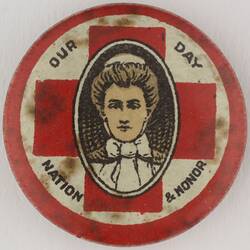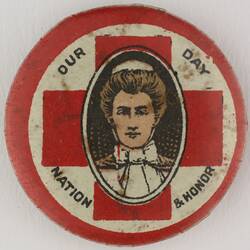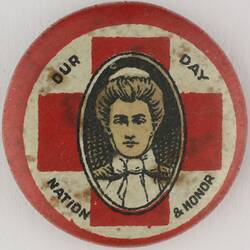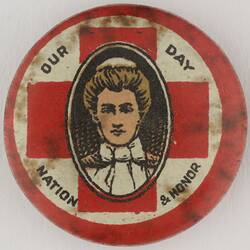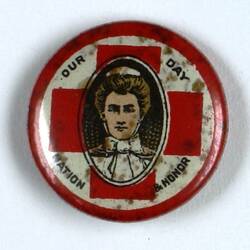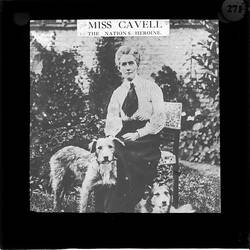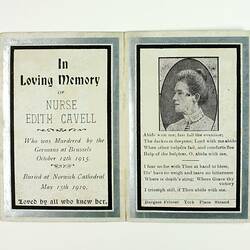Edith Cavell was born at Swardeston, Norfolk, where her father was Rector. She was an accomplished artist and she and her sister sold paintings and cards to raise money to build a Church Room. She took several posts as a Governess in England and in Brussels. In 1895, she returned to Swardeston to nurse her father through a brief illness and decided to take up nursing as a career in 1896, training at the London Hospital. She worked in many nursing homes in England and in Brussels and, on 10 October 1907 took charge of a pioneer training school for lay nurses on the outskirts of Brussels.
When World War I broke out in 1914, she was at home with her mother but returned to Brussels immediately. When that city fell to the Germans, they commandeered the hospital for their own wounded. English nurses were sent home, but Edith and her assistant, Miss Wilkins stayed. An 'underground lifeline' was established and some 200 Allied soldiers were helped to escape. This organization lasted for almost a year. Eventually her part in it was discovered; she was interned and sentenced to death. A Lutheran chaplain obtained permission for the English Chaplain to visit her on the eve of her execution and to administer the Blessed Sacrament to her. In the early hours of 12 October 1915, the death sentence was carried out by a firing squad.
During her last hours, she wrote, 'Standing as I do in view of God and eternity, I realise that patriotism is not enough. I must have no hatred or bitterness towards anyone.' After the War, her remains were escorted to Westminster Abbey for the first part of the Burial Service, on 15 May 1919. A special train then took the remains to Norwich where they were interred in the Cathedral precincts.
Museum Victoria holds several items that commemorate the life and contribution of Edith Cavell, including badges, photographs and a commemorative card.
More Information
-
Keywords
-
Authors
-
Article types

